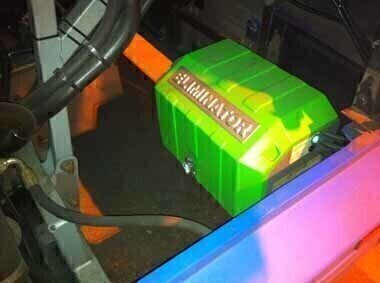Air Clean Up
Successfully Controlling Hydrogen to Cut Engine Emissions
Nov 03 2014
What we breathe in everyday contains harmful emissions from a variety of sources including those from cars, trucks, buses and ships engines. Despite initiatives that urban areas have introduced, including the shift towards cleaner heavy duty diesel vehicles and low-emissions vehicles and fuels, it is hard to see whether anything is actually working.
The World Health Organisation’s research into outdoor air pollution in both cities and rural areas was estimated to cause 3.7 million premature deaths worldwide per year in 2012. Following the smog earlier this year [April 2014] this was revised to 7 million; the deaths being due to exposure to small particulate matter of 10 microns or less, which cause cardiovascular and respiratory disease, and cancers.
Without proper direction from Government it is arguable that this issue is quite simply being brushed under the carpet. In fact it has been reported that the air quality in London hasn’t improved at all since the introduction of the low emission zone.
Hydrogen systems have attracted bad publicity due to false and exaggerated claims but it is well known and widely accepted that the basic technology is sound.
Present solutions to reduce particulate emissions from engines in trucks and buses are achieved by exhaust filtration; collecting particulates in a filter until full, at which point the engine management system instructs it to inject more fuel into the system to burn off the contents into the atmosphere at high temperature.
Evidence has shown that such particulate filters are not working and in fact can cause an engine serious damage, leaving the driver stranded and bemused. Leaving the haulage firm facing huge bills. In addition, particulate matter is not actually reduced, it just builds up in the exhaust to be released into the atmosphere in one large black cloud as the filtration system tries to clear itself.
Shipping has also tried emission busting technology called exhaust scrubbing. However, the equipment is so huge that it is fitted some distance away from the engine room, this being the case it is debatable, due to the drop in temperature of the exhaust gases, whether the system is effective.
It had been recognised for years that the introduction of hydrogen into the combustion chamber of any internal combustion engine has a beneficial effect.
For the past five years, Hydrox (UK) has developed a unique programmable electronic hydrogen on demand device to the point where it has been engineered into a perfectly practical, mass-market product with quantifiable benefits.
Called the Eliminator, this computerised control system effectively controls the production of hydrogen and can be programmed to suit any size engine
Taking up little more space than the average car battery, this system can be easily fitted to commercial vehicles of all types and to any system working with diesel plant such as agricultural, automotive, construction and marine equipment. Requiring minimal servicing, the system will produce hydrogen only when the engine is running, thus eliminating perceived problems associated with the dangers of storing hydrogen gas.
Through controlled and fully documented, independent tests conducted at Millbrook, the device has been proven to reduce carcinogenic particulate emissions from an already-efficient euro 5-diesel truck engine by a consistent and repeatable 22%. This is a first for industry.
It is hoped now that the market will sit up and take notice as to what is practical reality as at the moment everyone seems to be content to bury their heads in the sands. Whilst Hydrox won’t make false claims of ‘fantastic fuel savings’ they can genuinely give industry a much needed emission reduction device.
Events
Nov 26 2024 Paris, France
Nov 27 2024 Istanbul, Turkey
H2O Accadueo International Water Exhibition
Nov 27 2024 Bari, Italy
Biogas Convention & Trade Fair 2024
Nov 27 2024 Hanover, Germany
Dec 11 2024 Shanghai, China










-as-feedstock.jpg)




